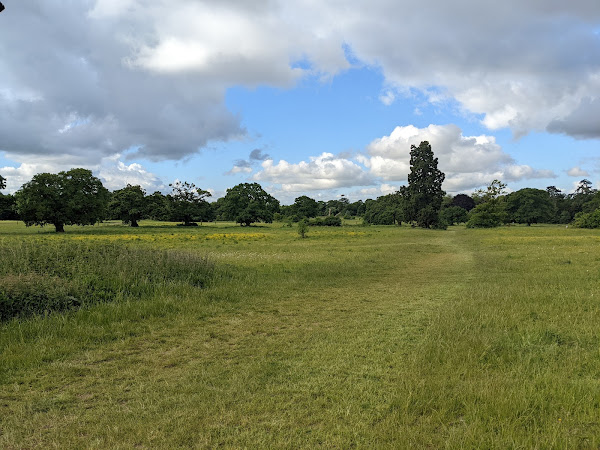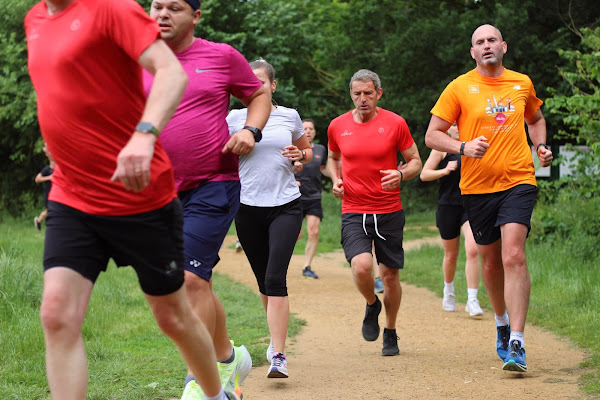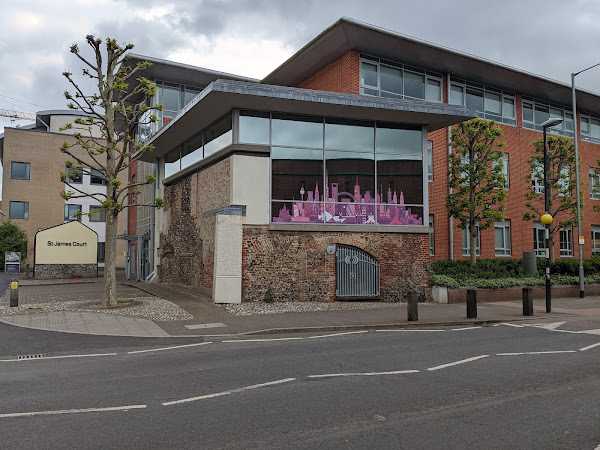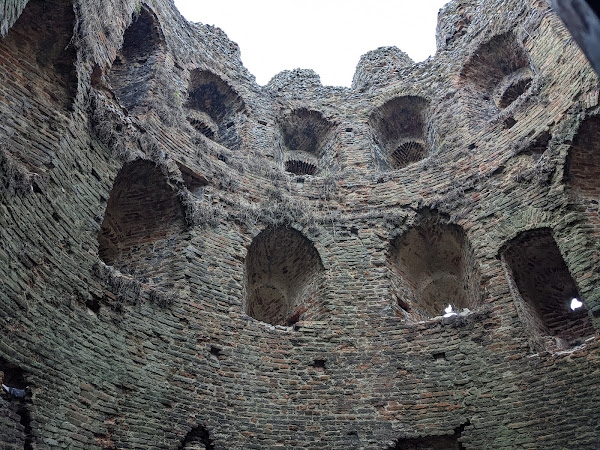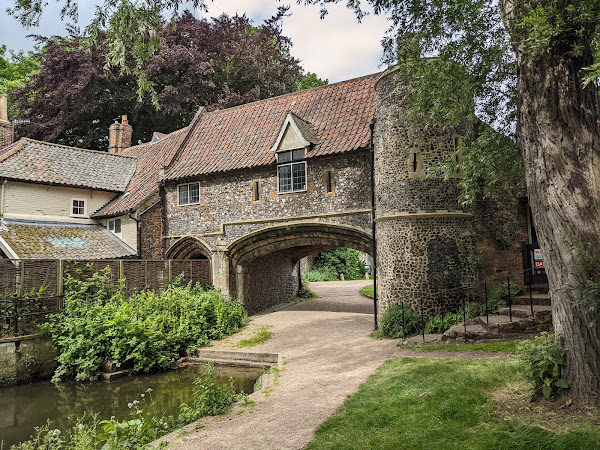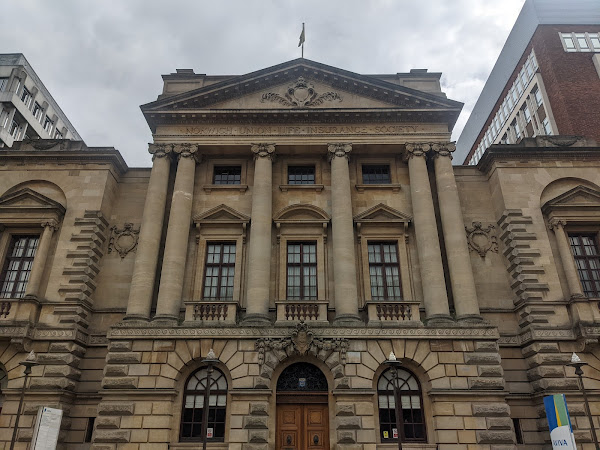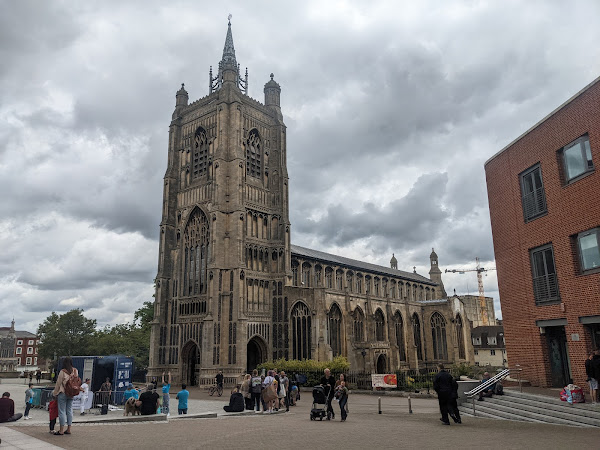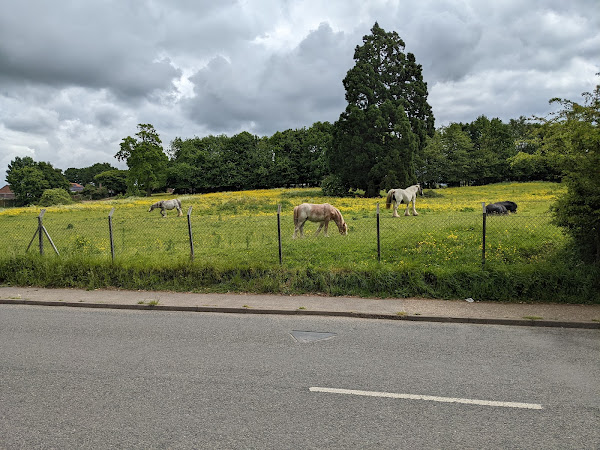Last week I ran at South Woodham Ferrers parkrun, and subsequentally realised that I had been making some good progress visiting the cluster of events in Essex, however, this good work made me realise that I haven't really made much progress visiting the cluster of events directly in the vicinity of Norwich, and so today I decided to change that by visiting Catton parkrun!
The area
Located in the north of Norwich, Catton Park (alongside Catton Hall itself) is the remains of the former Catton Hall estate, which was originally developed in the 1780s. The estate was in active use until the outbreak of World War 2, when the land was used for farming, and was broken up and sold for residential development after the war.
Today, the park is actively managed as a country park, while Catton Hall has been converted into apartments, and its immediate grounds are not accessible to the public.
The course
Catton's course initially follows a loop around the perimeter of the park, before tracing a figure-of-8 pattern over the course of the second lap. The course undulates throughout, and is run almost entirely on grass and trail, with a short section on tarmac / compacted gravel.
Limited parking is available in the area, and so where travelling by car can't be avoided, attendees are asked to park in the Recreation Ground car park off Church Road, north of the park. Toilets are available in the lodge at the start, and refreshments are provided by a local refreshments van.
The run
Despite the large average attendance (and this week was no exception), Catton parkrun somehow managed to make today's run feel extremely community oriented. Marshalls called out the names of regular participants, and a large majority of attendees stayed and chatted with a coffee.
After a hard week of running, I couldn't help but find today's run a challenge. The softer surface was definitely welcomed, and the mix of sceneray encountered throughout the run means you're never lacking pleasant views at any point, including some of the sculptures dotted around the park (although I found the sculpture of Humphry Repton just a little creepy) !
Thank you to all of the volunteers for a great event!
After the run
After the run, the first thing I did was to explore the park a little more closely, which features (amongst other feature trees) a Giant Redwood.
I also followed the woodland trail to find all of the sculptures, including the creepy Humphry Repton sculpture.
After running at Norwich parkrun last year, I visited 6 of the Norwich 12, so I wanted to complete the set this visit. I followed a route to visit all 12 locations suggested by Our World for You, although I first stopped at Saint James Mill given I was approaching from the north.
On my way into the town centre, it was fascinating to see how modern developments have chosen to incorporate the city's history into their structure instead of trying to work around it, with many ruins in open display, while others have been more directly incorporated into other newer structures.
Saint James Mill
The first stop on my tour was Saint James Mill - a former mill situated on the bank of the river. The site is still in active use, although is now home to several businesses.
While it isn't part of the Norwich 12, you do encounter the Cow Tower along the route. While it may appear relatively small from the outside by today's standards, it is clear to see from the inside of the tower that this was absolutely a purpose-built defensive structure, especially when trying to spot the view ports from the outside of the tower!
Great Hospital
Instead of heading directly to the Great Hospital, a short extra distance you can find Pull's Ferry - a watergate of ferryman John Pull, which used to act as the entrance to a purpose-built canal (now filled in) leading from the river to the catherdal, to aide the transport of the stone necessary for the construction of the cathedral.
Unfortunately the suggested route leads to a private road, but the main entrance to the Great Hospital, which was founded in 1249, is accessible from the public road.
Norwich Cathedral
A short distance away lies Norwich Cathedral, although the route does suggest traversing private cathedral paths not intended for public use. Fortunately, publicly accessible paths are also available without too much of a deviation.
Exploring the area highlights how long this site has been in use, with ruins and remains of former buildings littering the area, including the remains of a monastic infirmary built between 1175 and 1200 now serving as a car park.
Norwich Castle Museum & Art Gallery
After exploring the cathedral, the route suggested heading towards Norwich Castle, following a route which encircles the castle to afford you the best views. On tip is to stay on the side of the road furthest from the castle for the best views!
Dragon Hall
After the castle, the Dragon Hall is the next stop - a medieval trading hall built in 1427.
Marble Hall
To the other side of the town centre lies Surrey House, which houses Marble Hall - an elaborate hall with marble on every surface. Unfortunately the building was not accessible on the day I visited, although the exterior itself is grandeous in its own right.
The Assembly House
I unfortunately didn't take a picture of the Assembly House, but the building is located next to The Forum.
From the Assembly House, the next major sight (though not one of the Norwich 12) is St Peter Mancroft church, located opposite the main entrance to The Forum.
The Forum
The Forum houses a large library, as well as a number of cafes.
City Hall
Along the road from The Forum lies City Hall, home to both the council and also the Norwich police force.
The Guildhall
Another site of early trading in the city, the Guildhall is located next to City Hall.
The Cathedral of St John the Baptist
From the previous cluster of sights, the next stop is a short walk westwards out of the main town centre. While Norwich cathedral is the religious focus for the Church of England in Norwich, The Cathedral of St John the Baptist offers the equivilent focus for Roman Catholics.
The Halls
The penultimate stop of my tour was The Halls - a former friary, and now an event space available for hire.
Deer Park
On my return to Catton Park, I stopped at the adjoining Deer Park, which is classed as part of the Catton Park country park, although it is distinct from the rest of the park, and was being used as a horse meadow at the time of my visit. It does however house the town's war memorial.
Links: Run report | Results | Strava
References: Norwich 12 | Route
